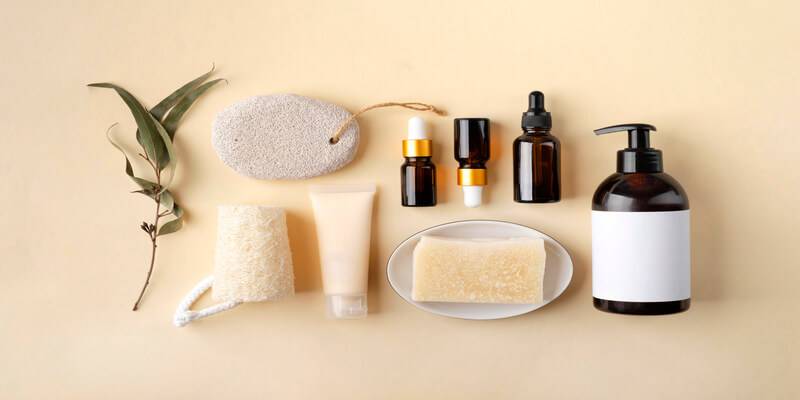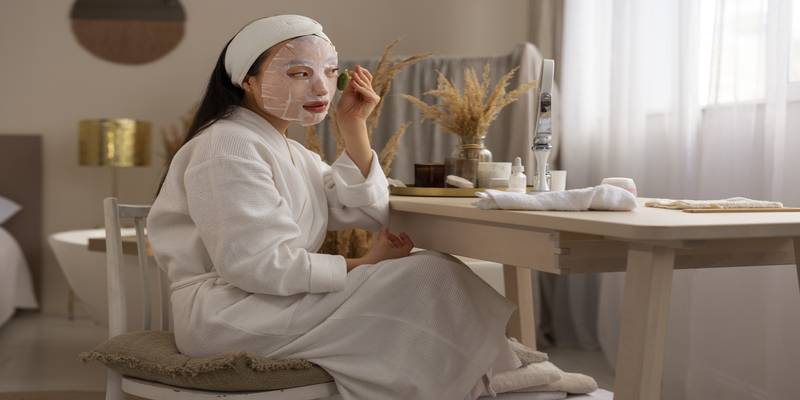What is all the rage about alpha-arbutin?

It is no surprise that finding the right skincare product for a specific skin concern is overwhelming and frustrating. The global skincare and cosmetic industry are raging with a countless number of brands, products, and promises. With a plethora of options, it is difficult to come down to ‘the one right’ product. Talking about skin concerns, one of the most common issues is hyperpigmentation. There are multifold causes that can lead to pigmented skin, but the most common include unprotected sun exposure and an unhealthy lifestyle.
Now that the issue is upfront, the million-dollar question is, ‘which is the right product and how will it suit the skin?’ I am sure you must have come across many products that guarantee the cure. Popular ingredients which help fight hyperpigmentation such as vitamin C, hydroquinone, kojic acid, and liquorice root, are all over the market. But are you familiar with alpha-arbutin? If you love the chase for the right skincare product and if I have awakened your inner dermatologist, read along!
What is hyperpigmentation?
It is a skin condition where parts of the skin appear darker or pigmented compared to the surrounding skin. It is caused due to overproduction of melanin and can be patchy or affect the entire body. Several factors can be responsible for the change in skin colour such as melasma (usually occurs during pregnancy due to hormonal changes), post-inflammatory hyperpigmentation (occurs after injury or inflammation to the skin such as acne, zits, cut, etc.), and sun-spots, among others.
Why any damage to the skin leads to discolouration?
Melanin gives complexion to our skin and is required by our bodies in an adequate amount. However, its overproduction makes the skin appear darker. Melanin is produced when the skin is exposed to any sort of damage or trauma — it can be UV exposure, a wound, bruise, cut or an injury. Imagine the secretion of melanin as a shield and the skin’s defence mechanism to fend off any damage or trauma. This is the reason that our skin turns darker after distress. With harsh summers looming, melanin has already started showing up at all the wrong places. Apart from sun exposure and injury, genes can also be responsible for over production of melanin.
So, do we want melanin or not?
Yes, we need it but in an adequate amount. The question is, ‘how do we control the unnecessary production of melanin and reduce pigmentation?’ Here comes the role of the holy grail — alpha-arbutin.
What is alpha-arbutin?
Arbutin, a glycoside and a skin-brightener, is a naturally occurring derivative of hydroquinone (a skin lightening ingredient that kills the cells responsible for melanin synthesis). It can be extracted from plants such as pears, shrubs, mulberries, bearberries, wheat, etc. However, it can also be manufactured synthetically using hydroquinone. It has two stable and effective chemical forms — A-arbutin and Deoxyarbutin. There are two types of arbutin — Alpha and Beta. Beta arbutin is considered unstable, less reliable, and cheaper compared to alpha arbutin. The latter is more stable, effective, soluble in water, and absorbs quickly into the skin. Alpha-arbutin is naturally extracted from bearberry and potentially reduces melanin synthesis. It prevents discolouration and hyperpigmentation, reduces the appearance of acne scars, has anti-ageing and anti-oxidant properties, and prevents skin from darkening after sun exposure. The said ingredient is in vogue in the skin care industry as it is safe to use and has numerous benefits.
How does alpha-arbutin work?
Alpha-arbutin works as a tyrosinase inhibitor, which in turn reduces the synthesis of melanin. It prevents skin discolouration and pigmentation by inhibiting the secretion of melanin. Let’s delve deeper for a better understanding. There is an enzyme called tyrosinase that regulates and stimulates the synthesis of melanin, whenever skin cells are exposed to any sort of damage. In such a situation, the tyrosinase enzyme starts creating melanin with the help of the natural substrate — tyrosine. The melanin synthesised is then transported to the top layers of the skin, acting as a shield and swaying away any threat.
Now, when you apply the product onto your skin, it absorbs quickly and reaches the deeper layers of the skin. Alpha-arbutin happens to have molecules of naturally derived hydroquinone, which pose structural similarity to tyrosine. It is important to note that the hydroquinone present in alpha-arbutin acts as a reservoir of the same and is not dispersed instantly. The body’s natural defence mechanism gets activated after the skin gets exposed. Tyrosine facilitates the production of melanin. This is when the dormant hydroquinone comes into action, and instead of tyrosine, it reaches the site of melanin synthesis, thereby preventing the overproduction of melanin. In addition, unlike kojic acid and hydroquinone, alpha-arbutin is safe to use due to its targeted action as it pinpoints only the tyrosinase enzyme which is present in a particular type of skin cells (melanocytes) and not the whole body. Hence, less possibilities for side effects. However, it is best to consult a doctor first before using anything on your skin.
Side effects of alpha-arbutin
Alpha-arbutin has a green origin but still is a natural derivative of hydroquinone. It may cause slight skin irritation and photosensitivity to a few. Hence, it is recommended to do a patch test before use.
What could be the possible reason for skin irritation?
Well, there can be many underlying reasons from poor and unhygienic lifestyles to just sensitive skin. One of the most common reasons which people usually fail to understand is the skin’s pH level. Yes, pH is that important! The full form of pH is ‘Potential of Hydrogen’ or we can say it is the concentration of hydrogen ions (relates to the acidity or alkalinity of the skin) present on the skin’s surface. If you remember your chemistry classes back in school, pH is a type of scale measured in numbers from 0 to 14. Below seven is acidic and above is alkaline. Ideally, the skin’s pH should be 4.7 or range between 4.4 to 6 — that’s acidic. Now due to certain environmental, health, and lifestyle-related factors, the pH gets hampered. When the pH is imbalanced on the outermost layer of the skin, the products we apply fail to leave a greater impact.
How to prevent that?
The idea is to balance the skin’s pH or restore the good bacteria that are on the outermost layer of the skin. There are many ways to restore pH — a diet full of antioxidants, sun protection, hydration, regular moisturisation and massage of the skin. Apart from these lifestyle changes, a good toner will aid in balancing the skin’s pH. If you feel a skincare ingredient is not working, try using toner on a clean face, wait for five minutes and then apply the product.
How and when to use alpha-arbutin?
Generally, it takes one to two months to show significant changes on the skin. Consistency is the key. The product is mostly available in the form of serum so follow the below-mentioned procedure:
• Double cleanse your face (first using micellar water or a cleansing balm followed by face wash)
• If you wish to use a toner, this is the time. It is not mandatory. I prefer to keep my skincare routine as simple as possible, keeping the layering of products to a minimum
• If you are using a toner, wait for five minutes till it absorbs nicely into the skin. Follow it up with four-five drops of serum
• Again, wait till the serum sinks in and layer it up with a thin layer of moisturiser. (I prefer ending it with just the serum, but you can use a moisturiser if you like).






